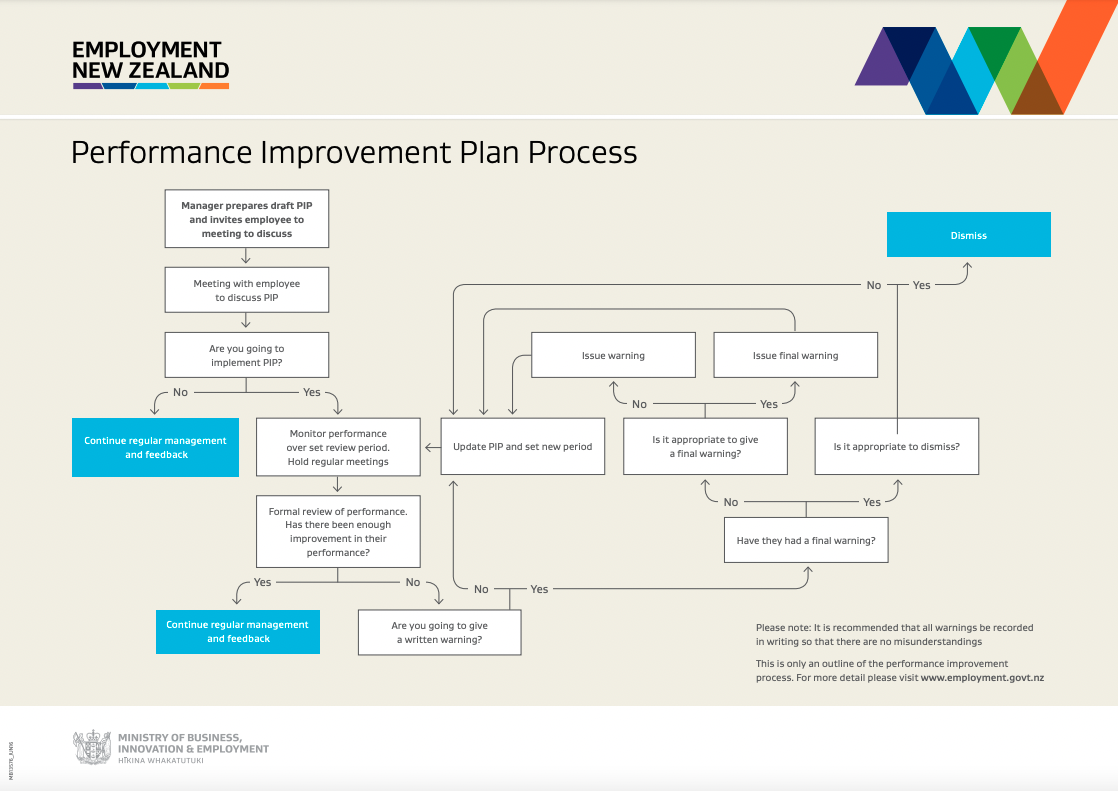
We all know that, sometimes, despite our best efforts to build them up and encourage their success, employees do not perform as we expect.
Poor performance may go undetected for a while, but sooner or later, it will be noticed; whether through general negligence, corner-cutting, missed deadlines or lack of attention to detail.
It's not always easy to provide negative feedback or have difficult conversations, but the ability to do so effectively is key to being a good employer or manager. It's also essential to the success of your business because if underperformance goes unaddressed, it will impact the rest of your team and overall productivity.
This blog post follows our post on managing employee performance and development and provides tools, techniques and tips for dealing with underperformance. We'll look at the distinction between underperformance and misconduct, how to set up PIPs and what to do if there's still no improvement. We’ll also touch on the risks of you mismanaging employees who don’t meet performance expectations.
Identify and address issues quickly
There is no room for dead weight, especially in a smaller business, so you need to get on top of poor performance sooner rather than later. Minor issues are also easier, quicker and cheaper to solve than problems that have grown and become established habits.
So don't wait for small matters to become big problems. Set expectations right at the beginning of the employment relationship and make sure you have a targeted, effective performance review system that can keep people on track or alert you to problems early on.
If you notice that someone is struggling to meet their goals, do not wait until the next performance review to address the problem, but deal with it as soon as possible.
Separate conduct from performance
The next step is to examine and understand what the issue is because that will determine how to respond. Is it a performance or a conduct issue? It can be useful to determine whether it’s a matter of skill or will. A skill issue is where an employee doesn’t have sufficient skills or competency to be effective in the role, while a will issue is one where they are knowingly doing something wrong, which will generally lead to disciplinary action for misconduct.
If it’s a skill issue, work with the person to determine what the main contributing factors are. Are the performance goals unclear or the role ambiguous? Have they had adequate on-job training or support? Is there a lack of communication, stimulation or engagement? Are there personality clashes, conflict within the work environment, or poor workplace morale? Once you have identified the concerns, the employee may have a reasonable explanation or you can seek ways to improve.
Tip: Set aside any personal emotion about the situation as it will get in the way of your understanding of the facts and ability to find mutually-beneficial solutions.
Coaching
Informal discussions are key when it comes to managing performance. People respond much better to a chat or something brought up in a regular catch-up rather than finding out in a formal performance review meeting a few months after the fact.
Again, set expectations early about what the goals are, how to expect and give feedback, when and how you will meet (face-to-face in the workspace, in a training room, or online), what support to expect, timeframes, and how to know if goals or milestones have been met, or not.
Ask questions, listen, and provide strategic advice and counsel. Keep the focus on the issue rather than the person, and work on specific aspects that they need to improve or where they may need additional support or an adjustment of the role to better match their skills and motivations. Explain how their underperformance is affecting the business so they understand the wider impacts. Use workplace tasks and situations as learning opportunities, so the person can improve by doing, possibly under the supervision of an experienced colleague.
Put things in writing so everyone agrees on, and can refer to, what has been discussed and what the expected outcomes are.
Performance improvement plans
The majority of instances of underperformance can be addressed by informal coaching, but sometimes you need more formal performance management tools.
Performance improvement plans (PIPs) are a structured process designed to improve underperformance or unsatisfactory workplace behaviour (again, we’re not talking about serious misconduct such as bullying, sexual harassment or theft that requires disciplinary action).
PIPs are often used following a formal disciplinary process for underperformance to support the employee as well as setting clear expectations that if these are not met, further disciplinary action may occur. Consultation with the person is essential and the employee needs to commit to the improvement process. Discuss the reason for the PIP and agree on specific and realistic goals, any necessary training, reasonable timeframes, follow-up meetings, how performance will be reassessed at the end, and potential management action for not achieving, e.g. a formal warning.
You can use PIPs before taking formal disciplinary action, but as always process is king, and we recommend getting professional advice before using a PIP.
Tip: Always document and securely store the PIP, as it records the business’ efforts to obtain improvement and the employee’s corresponding efforts. Include details of progress meetings and issues discussed. Also, give the employee a copy of their records.
Download our Performance Improvement Plan worksheet.
What if there’s no improvement?
Usually, if you approach the PIP in a focused, considered, and respectful way, the employee will lift their performance, which is a win for both parties.
If not, there are a few options to consider depending on how the person has responded. If the PIP followed a formal warning for poor performance, you can step up to a final warning, and you will then need to go through another PIP with the employee. If the PIP was not tied to disciplinary action, it may be time to consider this.
People often think disciplinary processes for poor performance are long and arduous, but they don't have to be. If you get onto problems early, document behaviour and expectations, and begin the disciplinary process as soon as those expectations are not being met, the process can be smooth and effective. It's important to allow employees to improve and ensure you are meeting any commitments for training and support.
At its longest, the process may look like this: informal coaching > formal disciplinary with a formal warning > PIP > formal disciplinary with a final warning > PIP > formal disciplinary with dismissal.

Source: Ministry of Business, Innovation & Employment
Legal risks
Another common misconception is that you must give an employee three written warnings before you can dismiss them for poor performance, but there is no legislative requirement for this number.
There are, however, specific steps you need to take and NZ employment law is very clear that employers must try to resolve performance issues in good faith and follow a fair process in doing so. This is why implementing a PIP is so effective in that it advises the employee of the issue, details the reason for the necessary improvement, and can warn them that employment is potentially at stake. A PIP also provides proof that the business has made efforts to remedy the situation, what the efforts were, and how the person has responded.
Ad hoc or rushed handling of performance management, disciplinary, or termination procedures could give the employee grounds to raise a personal grievance claim for unjustifiable dismissal or discrimination, which will suck up valuable management time and attention, not to mention any legal costs you may incur.
That’s why you need to ensure your approach to managing underperformance and misconduct is fair and transparent, and that you treat each case without prejudice or predetermination of an outcome.




